Rare Rides Icons, The Nissan Maxima Story (Part VI)

It turned out that 1994 was a high point for the Nissan Maxima. The third-generation sedan was just about the ideal mix of driving dynamics, quality, luxury, and whiz-bang tech features. It was offered in well-equipped GXE trim for lovers of comfort, and sportier SE for Sports Enthusiasts (or something). After its introduction for the 1989 model year, Nissan made relatively few changes to its impressive sedan.
Sales were around 100,000 units in its first two years, and then around 85,000 for the next two years. But in its final model year of 1994 the third gen’s sales nearly doubled, to 163,138. It was time for a new Maxima in 1995. It was a generation that branched out to become other interesting vehicles but also started the model’s decline.
The Japanese economic bubble that had created the excellent late Eighties and early Nineties Japanese cars had burst by the end of the third-gen Maxima. The situation lasted from 1986 to 1991 and saw the Japanese economy (especially with regard to stocks and housing) soar to new heights and experience massive inflation. The bubble burst early in 1992 and sent the economy tumbling into a long period of stagnation. It’s a very complex and interesting topic that’s out of scope for this series, but suffice to say it’s the reason the full-fat “Golden Era” of Japanese cars saw its last outing in the designs of 1995.
Elsewhere, competition against the Maxima had arrived. Though its primary competition in the Toyota Cressida died off after 1992 (it was not especially competitive, and Lexus needed the upmarket stage), Toyota had new options for consumers. At the upscale end of the Maxima was the Lexus ES 300, which was on its way to premium comfort sedan dominance. Its first XV10 generation ran from 1992 to 1996 (coinciding with Camry).
On the lower end of Maxima’s market was the Toyota customer who wanted a comfortable sedan, but not the flash and ruched leather of the ES. To them, Toyota offered the Avalon in 1995. There was other new competition in the mix, too: The second generation Mitsubishi Diamante was new for 1995, and so was the all-new and premium Mazda Millenia.
Suddenly, the 1993-1994 era where Maxima had a market to itself was over, and there were five total competitors for the same sort of customer. And that’s if you leave out upscale V6 versions of the XV10 Camry, which was as we know quite good. Though it could not anticipate all this new competition, Nissan worked long and hard on its fourth-generation Maxima. Its design was finalized by March 1991, and that date was significant given Japan’s economic timeline.
Nissan’s finances after the asset bubble were in shambles, and the company would not recover. Existing as an independent company for a few years after as it attempted to get itself back in order, Nissan was eventually forced into a partnership with well-funded Renault in 1999. The company’s early Nineties financial state immediately affected the new Maxima.
Known as the A32, the fourth Maxima was a victim of cost-cutting. The most notable engineering feature stripped from the new design was its independent rear suspension. Nissan replaced it with a torsion bar solid axle that was much cheaper to make. And though the Maxima was still of quality construction, it was not as solid as its predecessor.
As far as size was concerned, the new Maxima varied little from the outgoing model. Wheelbase increased by two inches to 106.3”, but overall length grew only fractionally, from 187.6” in 1994 to 187.7” in 1995. Width increased almost half an inch to 69.7”, as almost all cars grew wider throughout the Nineties.
Overall height increased notably too, as the Maxima grew more rounded and less sleek: The ‘94 was 53 inches tall, while the ‘95 was 55.7”. And down to its lighter suspension, the 1995 Maxima was lighter than its predecessor: It weighed 3,063 pounds in SE trim, while a 1994 SE was 3,139 pounds.
With the entry into its fourth generation, there was a product change for Nissan in its home market. The Maxima was no longer offered in Japan, as it was large and American-centric, and proved unpopular. Instead, Nissan offered the Maxima as the Cefiro, where it wore the suit you’d know as the Infiniti I30.
The Cefiro was one of Nissan’s JDM offerings since 1988, as a sporty upmarket alternative to the more conservative Laurel. The first Cefiro was related to the Laurel, shared its rear suspension with the Skyline, and competed against the Toyota Chaser at home. It offered inline-six engines with optional turbocharging and even optional four-wheel drive.
That changed with the summer 1994 introduction of the A32 Cefiro which debuted before the American market Maxima, and previewed what the Infiniti I30 would look like nearly two years in advance. Cefiro was available with different engines than the Maxima, in keeping with Japan’s displacement tax considerations.
All engines were V6 configuration and from the VQ engine series. The smallest Cefiro engine was a 2.0-liter, but the 2.5-liter VQ25 and 3.0-liter VQ30 were also available. While other markets offered the 2.0 and 3.0, the 2.5 was sold only in Japanese Cefiros. This generation of the Cefiro was front-drive only, and also spawned a wagon version.
Worth noting, the A32 was called Cefiro only in Japan, as when Nissan exported it to places other than North America it was usually called the “Maxima QX.” Keep in mind, Infiniti was sold only in North America at the time. Limited to the UK market was plain “QX” badging, as Nissan wanted customers there to forget the Maxima altogether. This was also the first use of QX which Infiniti would adopt later to ruin its SUV nomenclature.
And we aren’t finished with Maxima variants just yet, as there was another major venture with the A32. With Nissan’s cash-strapped lifestyle it looked far and wide for opportunities to make money in new ways. One of those ways, it turned out, was with a small automaker in Korea, Samsung Motors International.
What happened next was a rapid-fire series of events between 1998 and 1999, which led to the investment of Renault into yet another car company, and the first Samsung passenger car ever made. A Maxima underneath with mixed styling and various pieces of trim, the sedan remained in production long after the rest of the world moved on (twice) from the A32. We’ll pick up there next time and then work our way back around to the standard North American Maxima that arrived in 1995.
[Images: Nissan, Samsung]
Become a TTAC insider. Get the latest news, features, TTAC takes, and everything else that gets to The Truth About Cars first by subscribing to our newsletter.

Interested in lots of cars and their various historical contexts. Started writing articles for TTAC in late 2016, when my first posts were QOTDs. From there I started a few new series like Rare Rides, Buy/Drive/Burn, Abandoned History, and most recently Rare Rides Icons. Operating from a home base in Cincinnati, Ohio, a relative auto journalist dead zone. Many of my articles are prompted by something I'll see on social media that sparks my interest and causes me to research. Finding articles and information from the early days of the internet and beyond that covers the little details lost to time: trim packages, color and wheel choices, interior fabrics. Beyond those, I'm fascinated by automotive industry experiments, both failures and successes. Lately I've taken an interest in AI, and generating "what if" type images for car models long dead. Reincarnating a modern Toyota Paseo, Lincoln Mark IX, or Isuzu Trooper through a text prompt is fun. Fun to post them on Twitter too, and watch people overreact. To that end, the social media I use most is Twitter, @CoreyLewis86. I also contribute pieces for Forbes Wheels and Forbes Home.
More by Corey Lewis
Latest Car Reviews
Read moreLatest Product Reviews
Read moreRecent Comments
- Ajla A union fight? How retro 😎
- Analoggrotto Finally, some real entertainment: the Communists versus the MAGAs. FIGHT!
- Kjhkjlhkjhkljh kljhjkhjklhkjh *IF* i was buying a kia.. (better than a dodge from personal experience) .. it would be this Google > xoavzFHyIQYShould lead to a 2025 Ioniq 5 N pre-REVIEW by Jason Cammisa
- Analoggrotto Does anyone seriously listen to this?
- Thomas Same here....but keep in mind that EVs are already much more efficient than ICE vehicles. They need to catch up in all the other areas you mentioned.




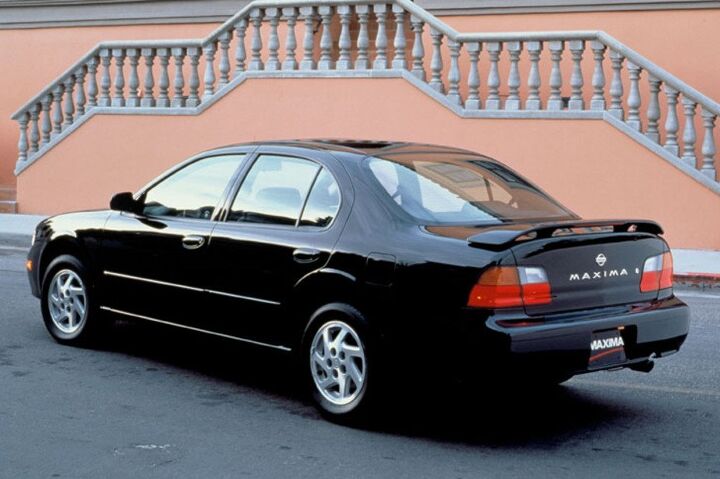


















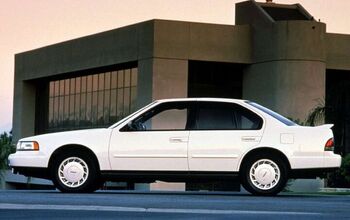
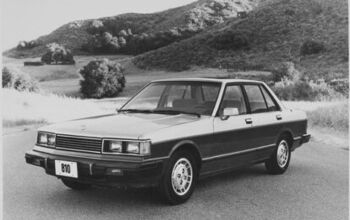
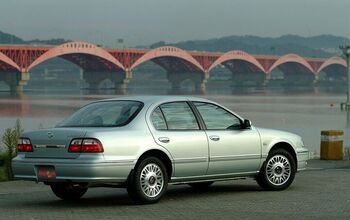
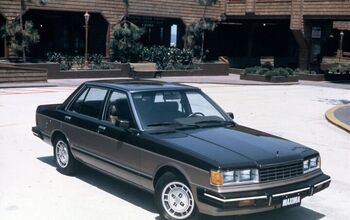
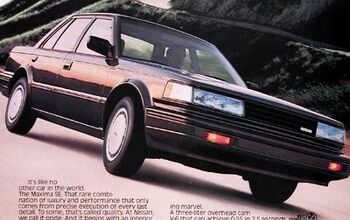










Comments
Join the conversation
My father owned a 1998 Nissan Cefiro Elite 2.0 V6 VQ (A32). The car had only two good aspects: it looked good and the VQ V6 was smooth and quiet. That’s it.
As good as the 155-hp 2.0 VQ V6 was, the car was a total dog to drive because of the ancient 4-speed automatic it was mated to. The shifts were slow and the gearing was totally off. This also resulted in attrocious fuel consumption. The car was mainly driven in the city so we would average 14-17 L / 100 km. Thankfully fuel was dirt cheap in the Philippines where we owned the car at the time.
By the way, Nissan sold the Cefiro nameplate in mainland Europe and in most Asian countries as well.
I have had 4th gen 1996 model for many years and enjoy driving as much now as when I first purchased it - has 190 hp variant with just the right amount of power for most all driving situations!